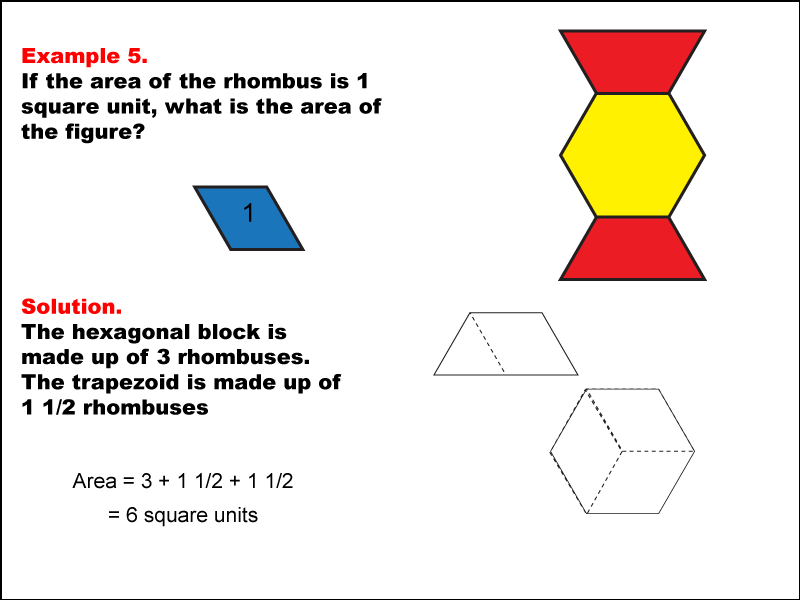
Display Title
Math Examples: Area with Pattern Blocks: Example 5
Display Title
Math Examples: Area with Pattern Blocks: Example 5

Topic
Geometry
Description
This example explores area calculation using a hexagonal block composed of three rhombuses and two trapezoids. Each rhombus has an area of 1 square unit, and each trapezoid is equivalent to 1 1/2 rhombuses. The total area is determined by summing the areas of all components, resulting in 6 square units.
Pattern blocks provide a hands-on approach to learning geometry, allowing students to physically manipulate shapes and understand their properties. This collection of examples demonstrates how different combinations of shapes can form larger figures, reinforcing concepts of area addition and spatial reasoning.
Providing multiple worked examples is essential for students to fully grasp geometric concepts. Each example in this series presents a unique configuration of shapes, challenging students to apply their knowledge in different contexts and recognize patterns in area calculations across various geometric arrangements.
Teacher Script: "Let's examine this hexagonal block made of rhombuses and trapezoids. Each rhombus has an area of 1 square unit, and each trapezoid is equal to 1 1/2 rhombuses. Can you identify how many rhombuses and trapezoids are in this figure? How do you think we can calculate the total area? Remember to consider both the whole rhombuses and the fractional parts contributed by the trapezoids."
For a complete collection of math examples related to Geometry click on this link: Math Examples: Area with Pattern Blocks Collection.
| Common Core Standards | CCSS.MATH.CONTENT.6.G.A.1 |
|---|---|
| Grade Range | 6 - 7 |
| Curriculum Nodes |
Geometry • Polygons • Applications of Polygons |
| Copyright Year | 2024 |
| Keywords | area with tiles |